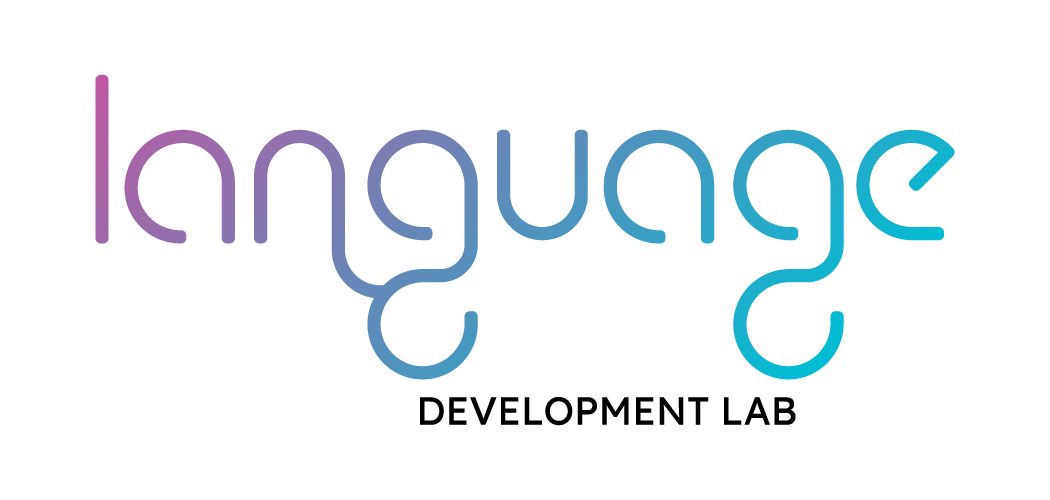Hong Kong Sign Language (HKSL) faces endangerment. Our project tackles this by working with the Deaf community to document HKSL, explore its signs, and empower Deaf culture. Join us in preserving HKSL and building bridges between Deaf and hearing communities.

The Deaf community in Hong Kong, the primary users of Hong Kong Sign Language (HKSL), faces significant marginalization due to the language barrier: the hearing doesn't understand the HKSL, but the Deaf have limited access to education in order to express themselves via writing. The lack of a written record, coupled with ableism and social stigma, creates immense challenges in deaf education access.
Today, HKSL continues to lack institutional and educational support, evident in the drastic reduction of Deaf schools from five to one, serving a mere 60 to 100 pupils. Despite this hardship, there are approximately 300 HKSL users under 15 years old as of 2021 (Census and Statistics Department, HKSAR, 2021), highlighting the critical need for improved language support and resources.

Anything that helps connect the Deaf and the hearing communities will overcome the language barrier.
This allows Deaf culture to rise above the difficulties of being in an isolated minority with low literacy.
Hong Kong Sign Language (HKSL) is relatively new and undocumented, with barely any written record prior to 1935. The Deaf culture, with no written tradition, relies on one-to-one (“oral”) transmission for survival.
Documentation is prerequisite to studying and preserving the sign language. The collected data acts as a reference resource and preservation effort.
Through collaboration with Deaf HKSL educators and the Deaf community, we documented a wide-range of HKSL data, which forms the core of our database.
By documenting HKSL and its visual characteristics, we aim to preserve HKSL and the intangible Deaf culture by
We have collected the dictionary forms of Hong Kong Sign Language words (the “citation signs”) across the pure-sign and literary sign strata. Over 1475 HKSL words were collected as part of our research. The highly diverse HKSL is comprehensively documented by including variations from Deaf community members in different districts.
Currently, the words are complete with a video of the sign performed in isolation, their translations in English and Hong Kong Cantonese, as well as handshapes, morphme segmentation and iconicity data.
Part of the database is mappable to ASL-LEX 2.0 for interlingual sign language comparisons.
HKSLLEX is named in homage of ASL-LEX 2.0.
open_in_new HKSLLEX Database open_in_new Database alternative site


Our collection of citation signs include iconicity ratings and iconic strategy classification.
Based on our documented HKSL data, our research further investigates the iconicity of HKSL words, a sign language characteristic where words resemble what they mean. An iconic sign is more “transparent” in meaning.
We devised an experiment to collect input from both the hearing and Deaf to see how iconicity helps learners to understand the meaning of a sign.
The iconicity data, including iconicity ratings from the Deaf and the hearing, as well as the iconic strategy employed, is available in HKSLLEX.

Folk etymology is the oral history of the origin of words.
Without a written tradition, knowledge of the origin of words is passed down only by re-telling.
We have collected retellings of the origin of signs to preserve the intangible cultural heritage for the illiterate cultural minority. The data is available in HKSLLEX.
During the study, we invited Deaf people from all ages to provide useful input regarding their native language, giving them direct participation in the process of HKSL preservation.
Through recruiting Deaf community members to learn about HKSL and sign language research in general, we encouraged a sense of ownership of HKSL.
The elderly Deaf people, who rarely use a computer, also learnt new skills in digital literacy in the course of providing HKSL data.
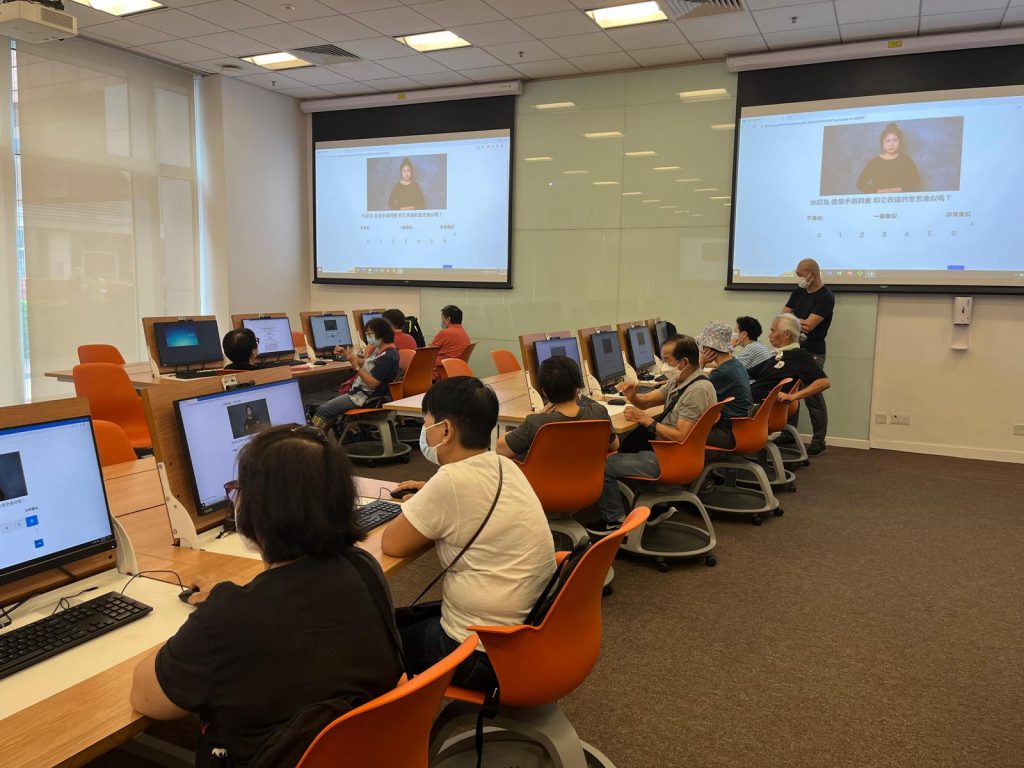
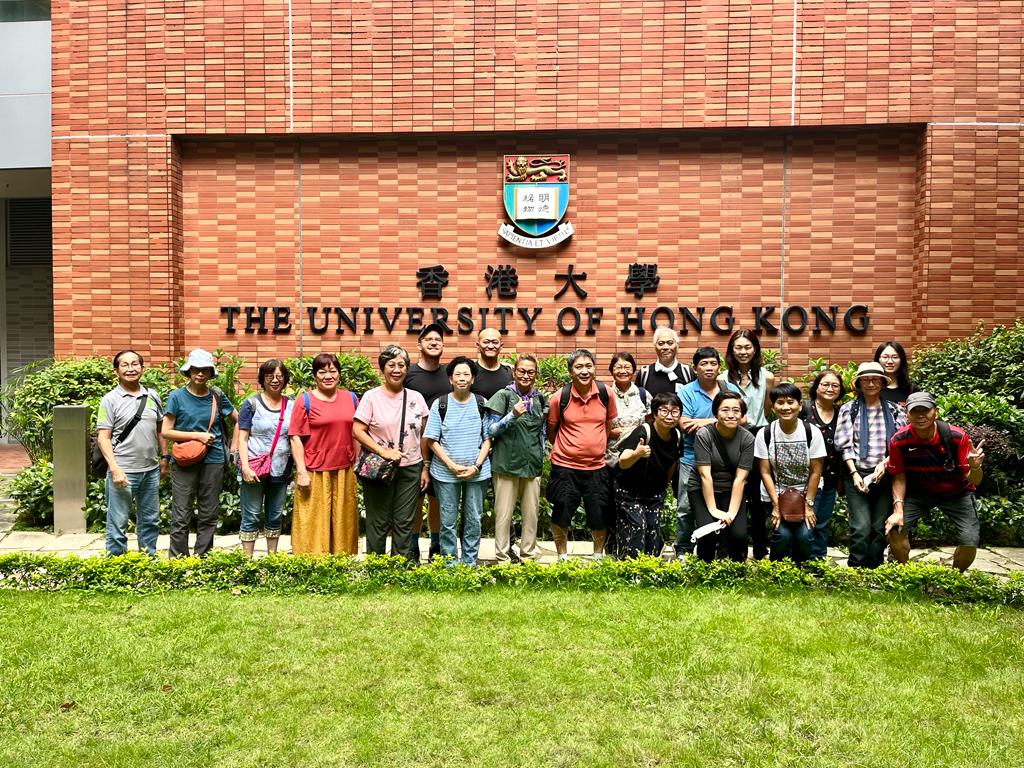
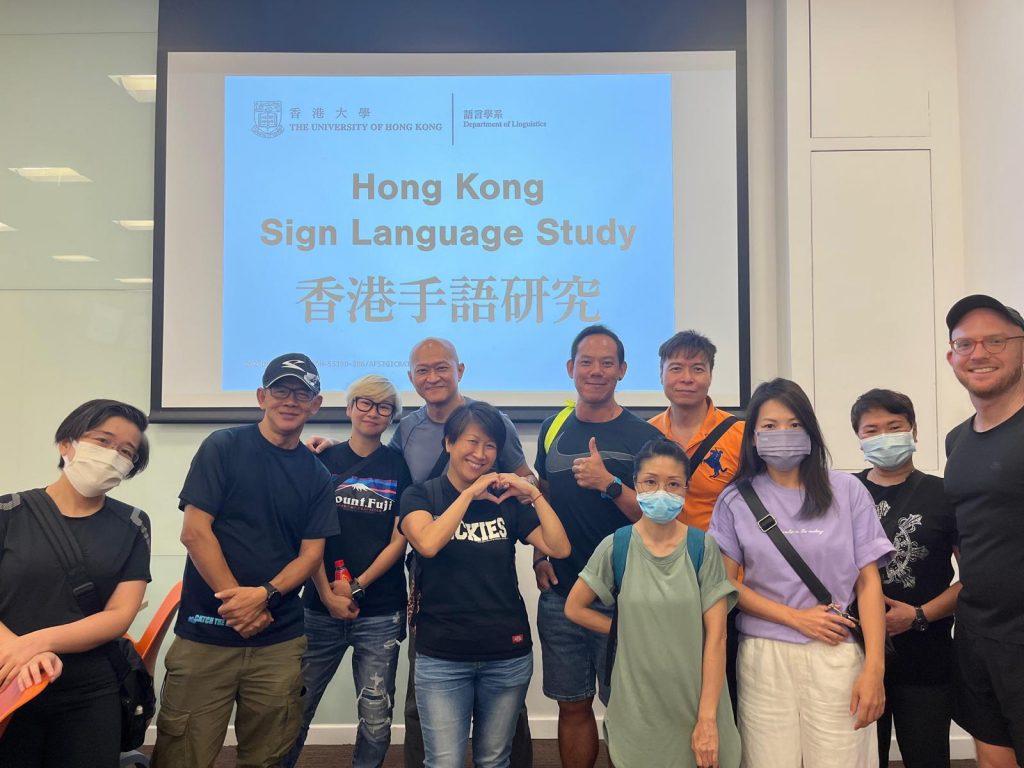
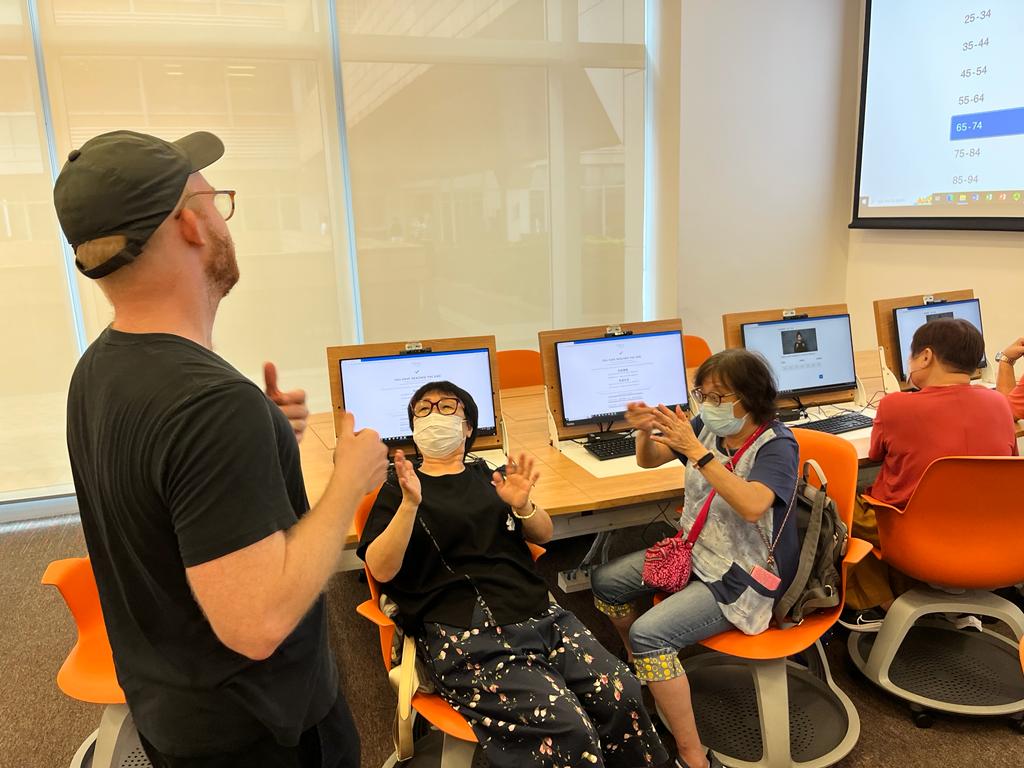
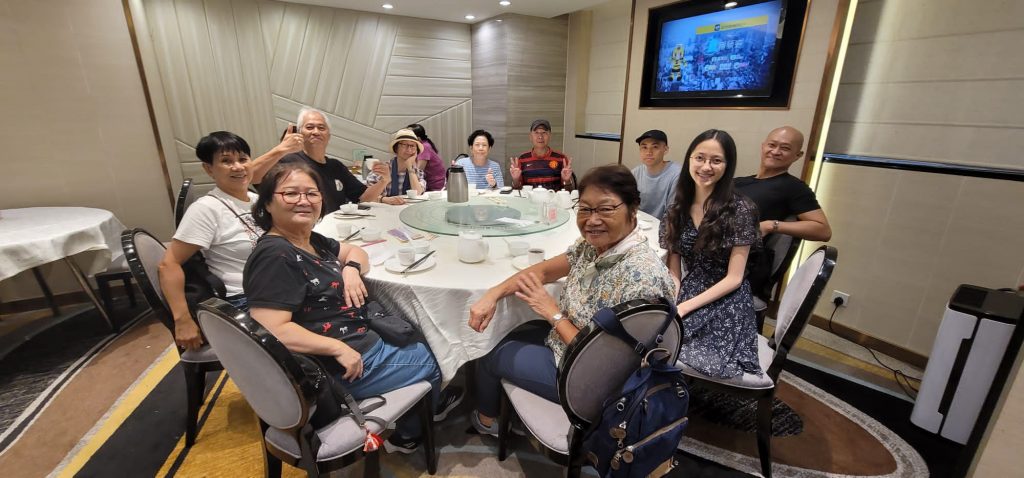
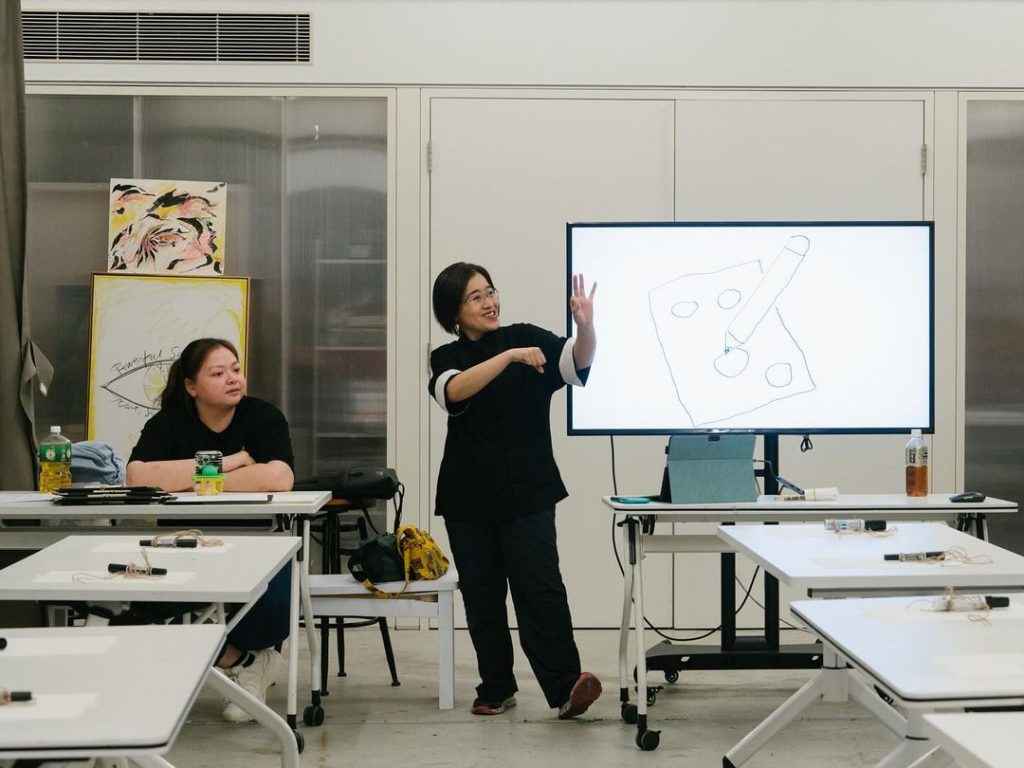

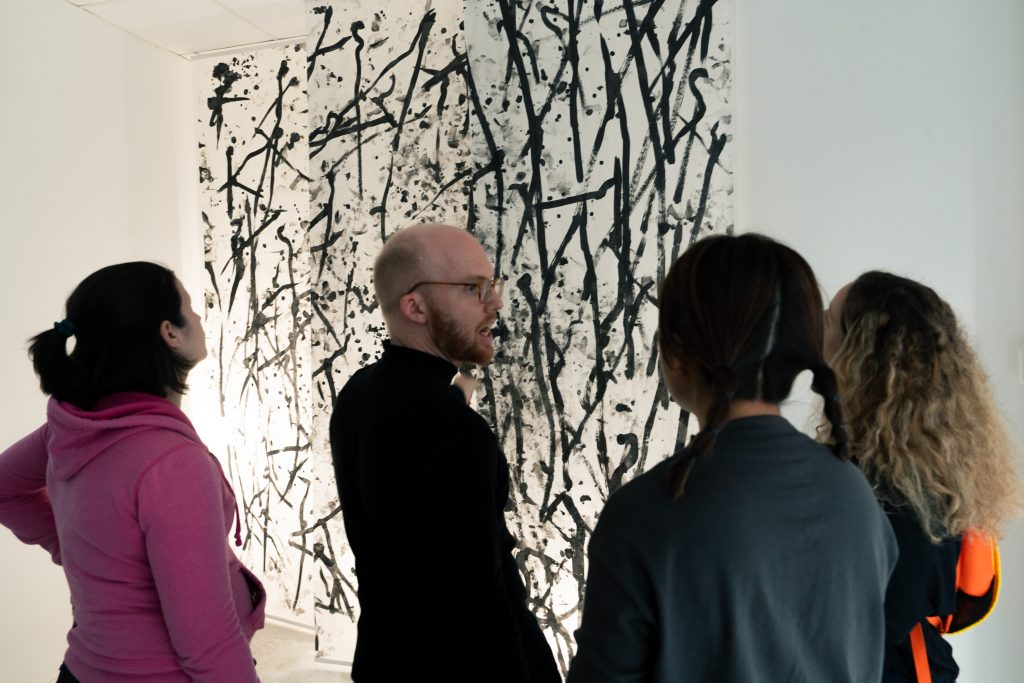
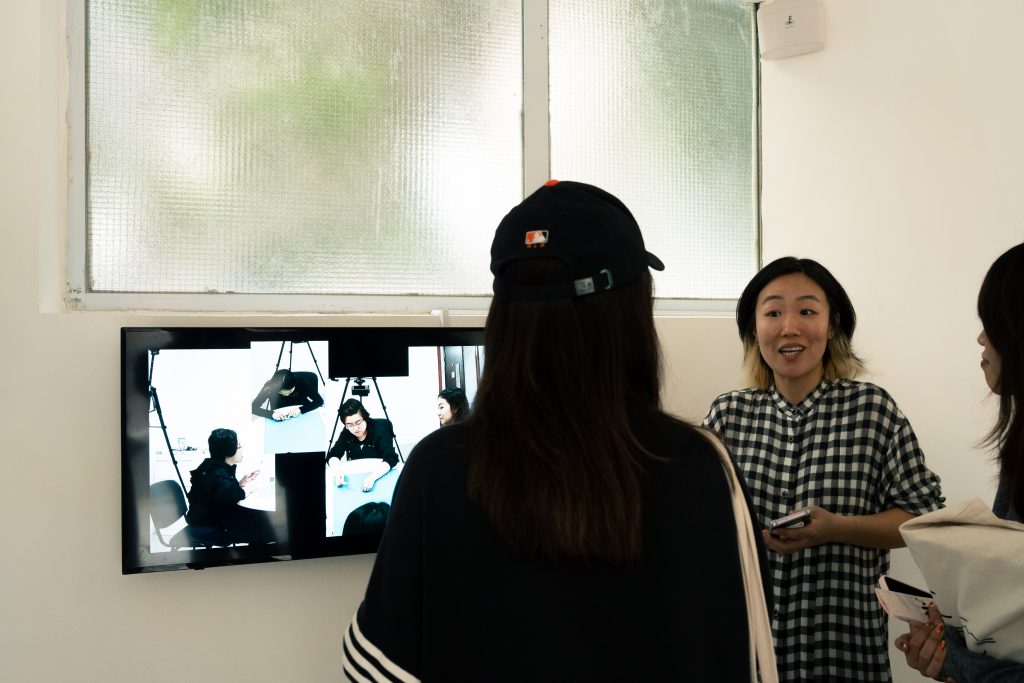
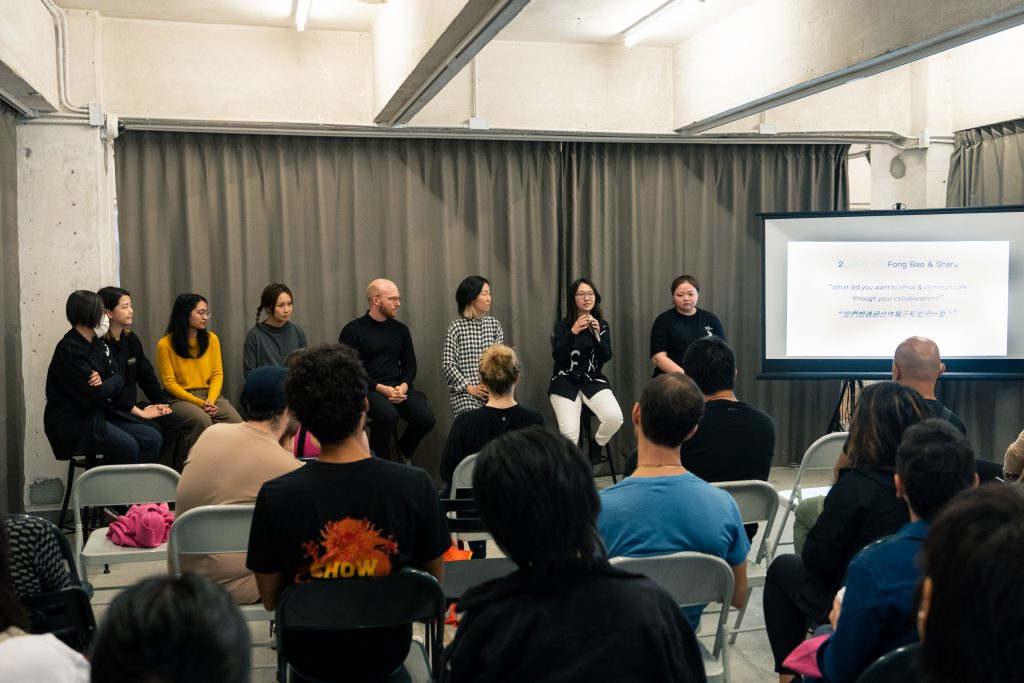
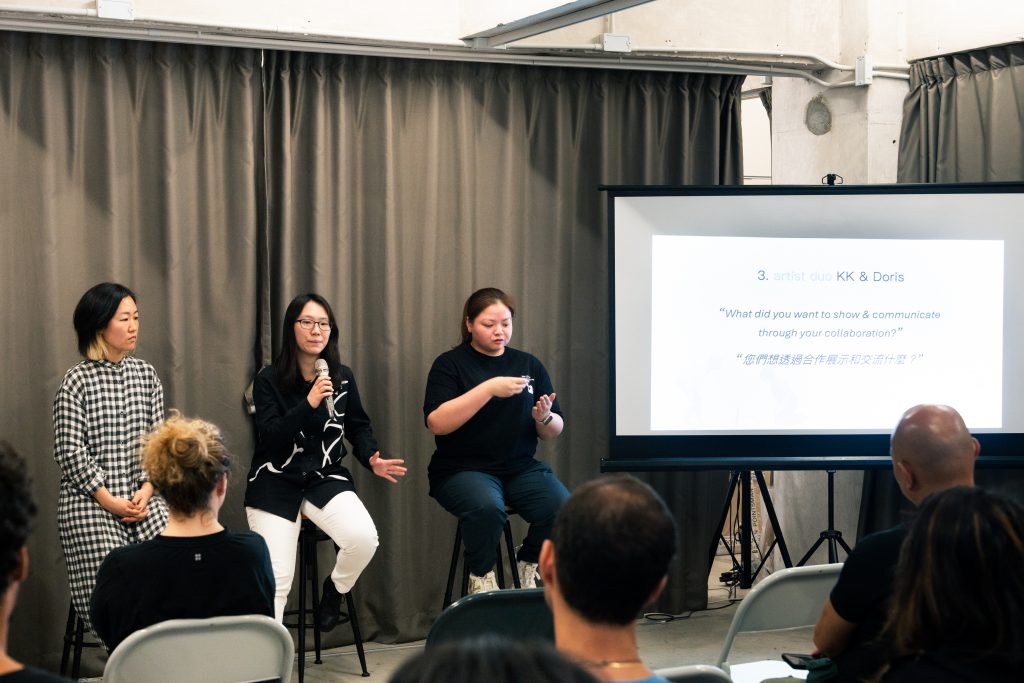
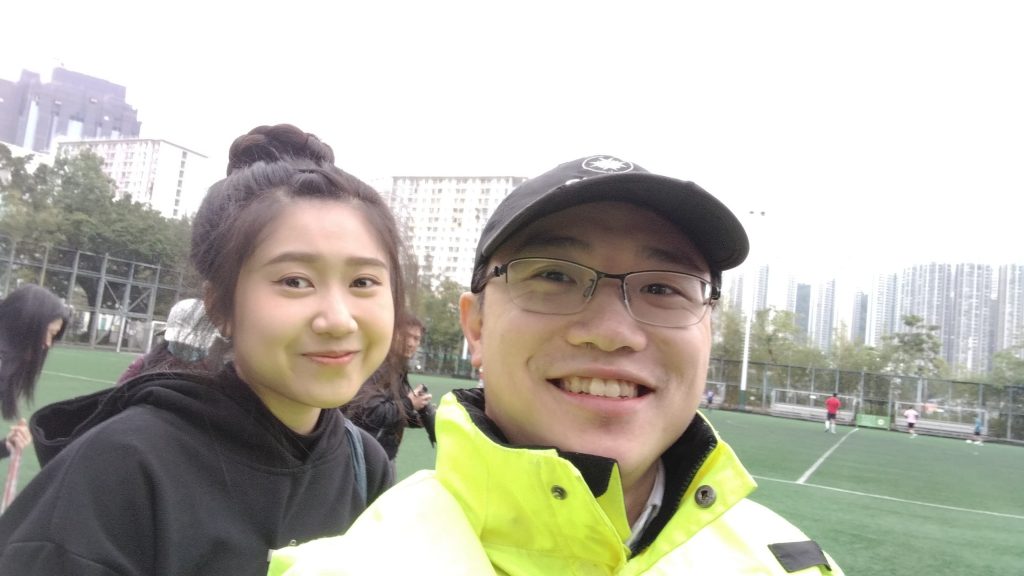
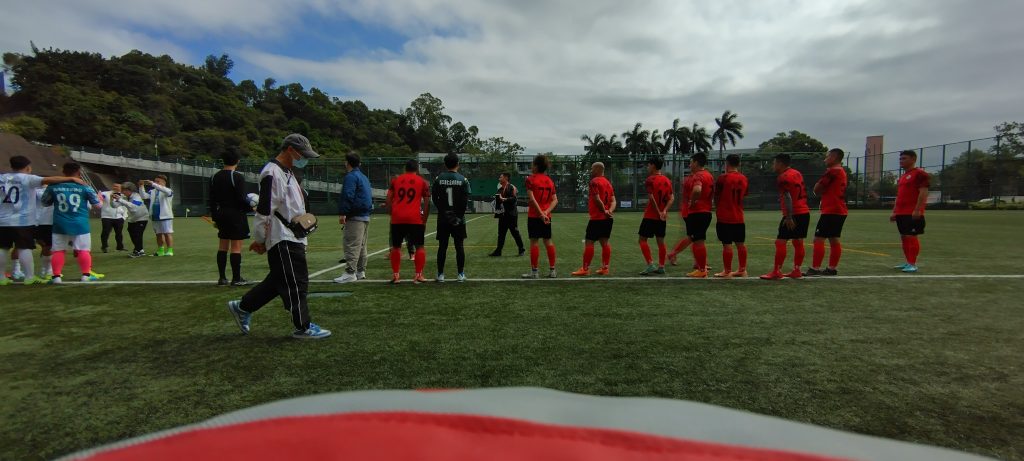
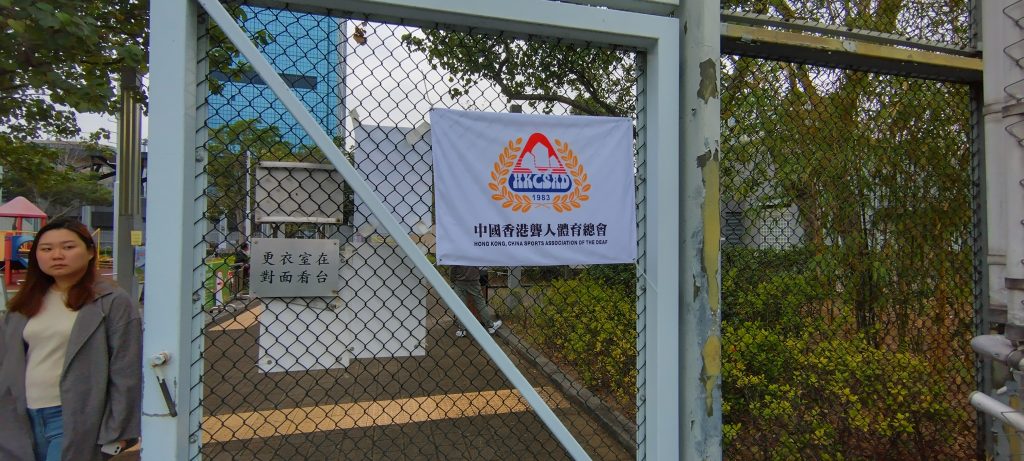
We have trained docents to assist in various cultural outreach projects with the Deaf.
They have been stationed at the “open_in_new Point Line Mean” exhibition, featuring art pieces from various communities in Hong Kong, including the Deaf community.
The artists worked closely with the docents to tell the story from the artist’s perspective to the visiting public with maximum impact.
The docents were also present in workshops hosted by the artists of the Point Line Mean exhibition.
The workshops were a creative and interactive experience for visitors to experience and understand Deaf culture.
The Deaf artists communicated directly with the audience using HKSL with the help of interpretation, providing an opportunity for the hearing public to be exposed to HKSL.
Our HKSL training was put to use in volunteering work in the benefit of the Deaf community.
The volunteer providing first aid service for two football matches organized Hong Kong, China Sports Association of the Deaf (HKCSAD) received training through our project.
We have also supported the production of “Bridge of Signs” , a documentary about Deaf parents and their children, and the challenges they face.
The documentary highlights the marginalization of the Deaf community, and how Deaf parents and CODA (Children of Deaf Adults) navigate through a world of sounds and noises.
The documentary was well-received both in the Deaf and hearing communities.
Through the efforts of our students and researchers in applying HKSL knowledge, we have made an impact on
This project would not be possible without the support of the following organisations:
(in no particular order)



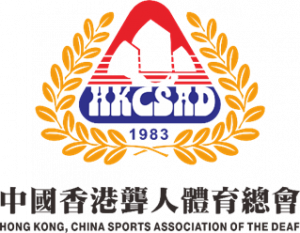


Census and Statistics Department, Hong Kong Special Administrative Region. (2021). Social data Collected via the General Household Survey: Special Topics Report—Report No.63—Persons with disabilities and chronic diseases (Statistical Reports 63). Census and Statistics Department. https://www.censtatd.gov.hk/en/EIndexbySubject.html?pcode=B1130121&scode=453#section1
Hong Kong-Macau Sign Language. (n.d.). UNESCO WAL. Retrieved 4 July 2024, from https://en.wal.unesco.org/languages/hong-kong-macau-sign-language
